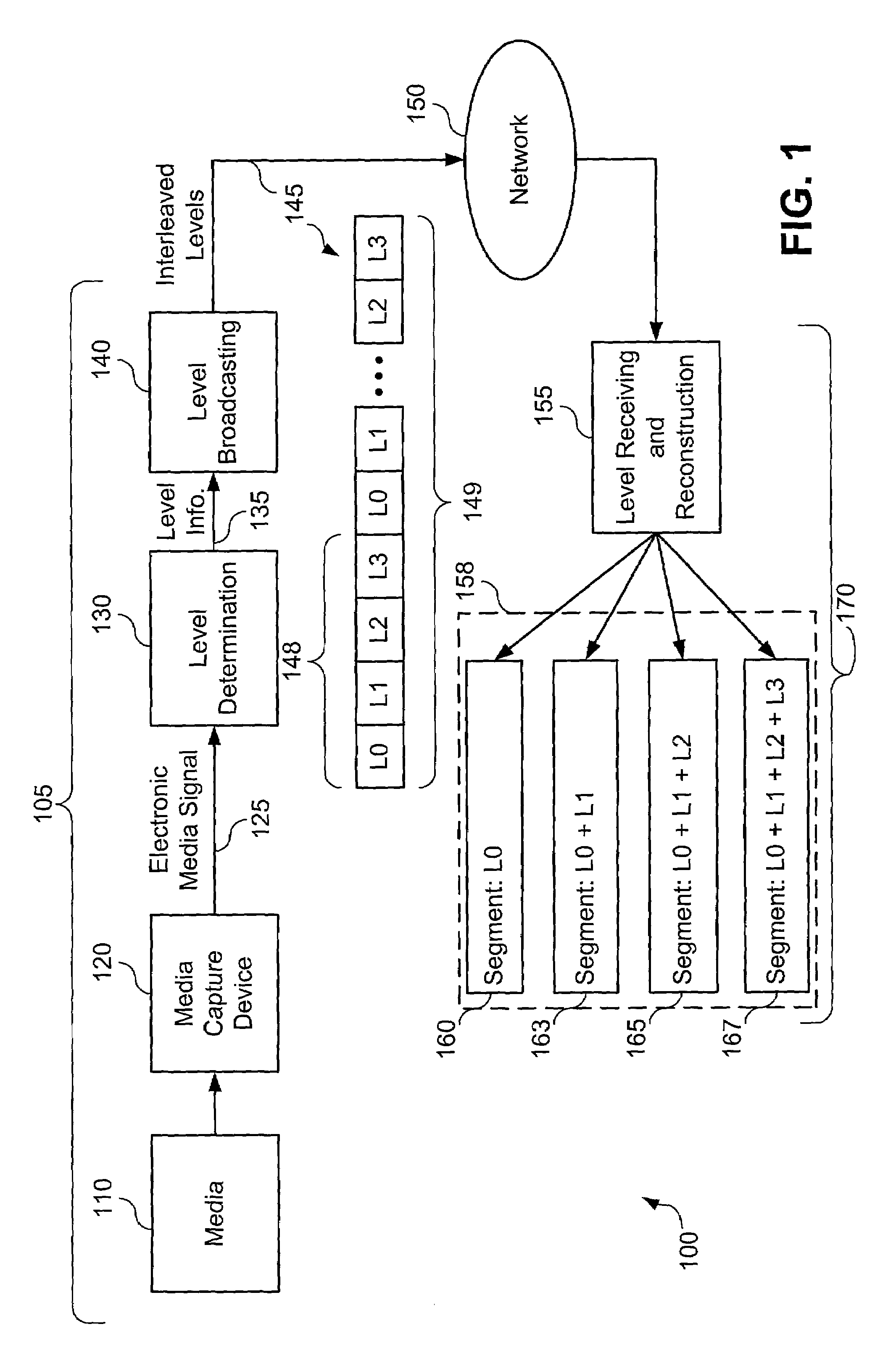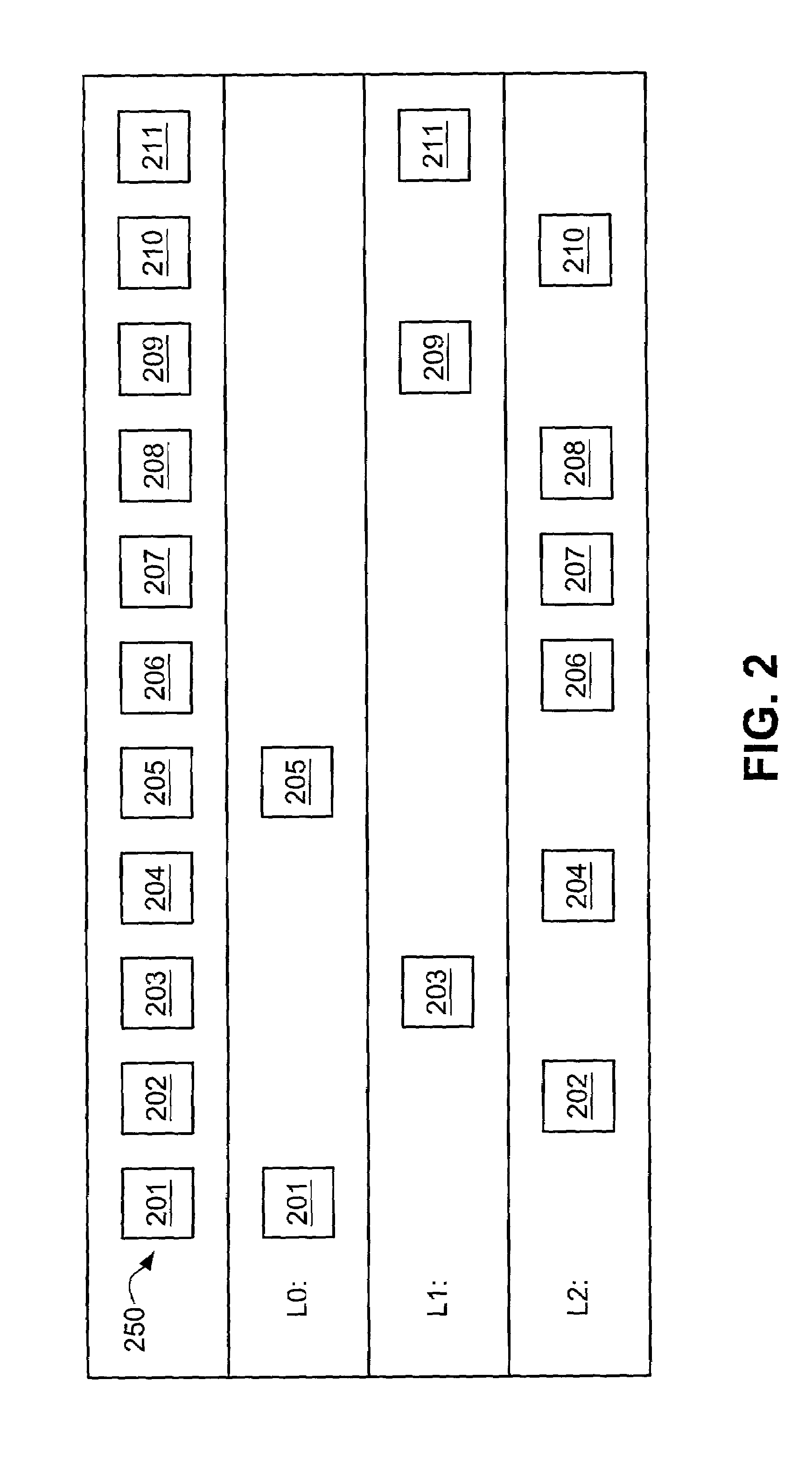Periodic broadcast and location of evolving media content with application to seminar and stroke media
- Summary
- Abstract
- Description
- Claims
- Application Information
AI Technical Summary
Benefits of technology
Problems solved by technology
Method used
Image
Examples
Embodiment Construction
[0031]Embodiments of the present invention create levels from evolving media. Evolving media is media that comprise history or comprise coarse views of the media. One way to determine coarse views of media is to determine levels of detail or levels of importance in the media. Levels of detail provide a user with mechanisms to view coarse or fine detail of the media. For instance, a coarse level of detail for a video can contain the frames of video that show large scene changes. A user could select a coarse level of detail to view a synopsis of what happened during a certain portion of the movie. Levels of importance are similar to levels of detail. Instead of being based on the amount of detail, however, levels of importance are based on significance. For instance, in seminar media, which is generally made of a series of slides in a presentation, a detailed slide may be considered less significant than another, less detailed slide. The more important slide will be part of a higher l...
PUM
 Login to View More
Login to View More Abstract
Description
Claims
Application Information
 Login to View More
Login to View More - R&D
- Intellectual Property
- Life Sciences
- Materials
- Tech Scout
- Unparalleled Data Quality
- Higher Quality Content
- 60% Fewer Hallucinations
Browse by: Latest US Patents, China's latest patents, Technical Efficacy Thesaurus, Application Domain, Technology Topic, Popular Technical Reports.
© 2025 PatSnap. All rights reserved.Legal|Privacy policy|Modern Slavery Act Transparency Statement|Sitemap|About US| Contact US: help@patsnap.com



